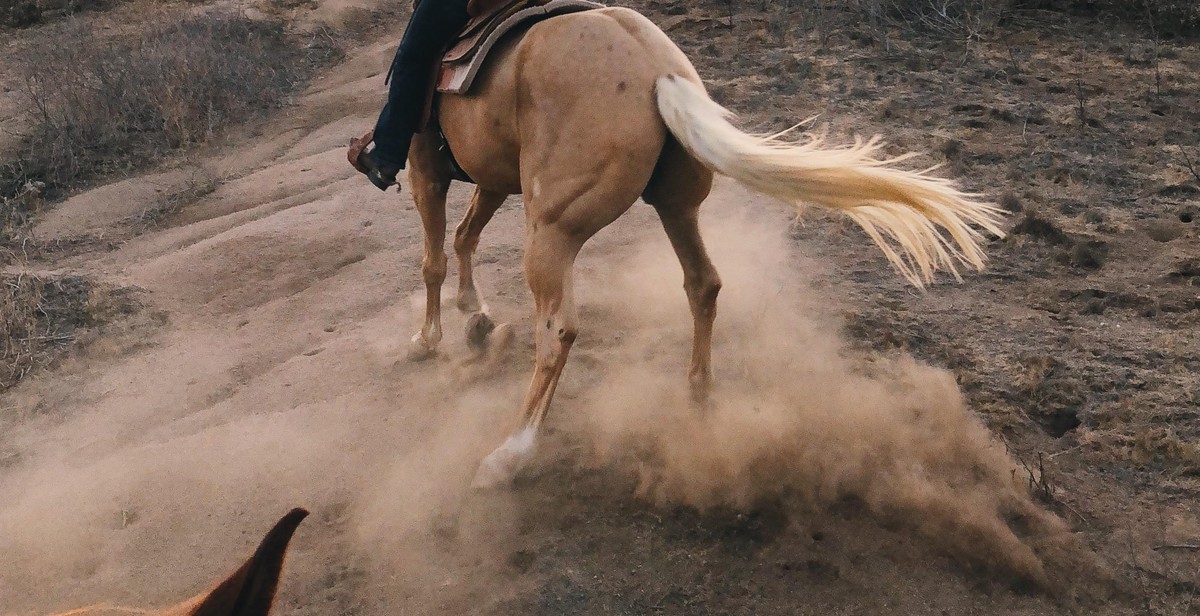How to Choose the Right Horseback Riding Boots: Finding the Perfect Fit and Style
As a professional equestrian and horse lover, I understand the importance of having the right gear when it comes to horseback riding. One of the most essential pieces of equipment for any rider is a good pair of horseback riding boots. Not only do they offer protection and support for your feet while riding, but they also add to your overall comfort and style.
My Experience with Horseback Riding Boots
Over the years, I have tried and tested various types of horseback riding boots. From tall boots to paddock boots, to western boots and more, I have learned the importance of finding the perfect fit and style for your individual needs.
One of the most important factors to consider when choosing horseback riding boots is the level of support and protection they offer. You need boots that will keep your feet and ankles safe from any potential injuries while riding. Additionally, the boots should fit comfortably and provide enough flexibility for proper movement while on horseback.
In this article, I will provide a comprehensive guide on how to choose the right horseback riding boots for your needs. I will cover everything from the different types of boots available to the key features you should look for when making your selection.

Factors to Consider When Choosing Horseback Riding Boots
When it comes to horseback riding, having the right gear is essential to ensure both safety and comfort. One of the most important pieces of equipment for any rider is the riding boots. Here are some factors to consider when choosing the right horseback riding boots for your needs:
Riding Style and Discipline
Different riding styles and disciplines require different types of boots. For example, if you are into dressage, you will need tall boots that provide support and protection for your legs. On the other hand, if you are into Western riding, you may prefer shorter boots that allow for more flexibility and movement. Make sure to choose boots that are appropriate for your specific style and discipline.
Material
When it comes to horseback riding boots, materials matter. Leather is the most common material used for riding boots, as it is durable, breathable, and offers good grip on the stirrup. Synthetic materials such as rubber and neoprene can also be used, but they may not offer the same level of durability as leather. Choose a material that is comfortable, durable, and appropriate for your riding needs.
Boot Height
The height of your riding boots is important, as it can affect your comfort and safety while riding. Tall boots provide more protection and support for your legs, while shorter boots offer more flexibility and movement. If you are into jumping or dressage, tall boots may be your best option. However, if you are into trail riding or Western riding, shorter boots may be more comfortable and practical.
Sole and Heel
The sole and heel of your riding boots are also important factors to consider. The sole should provide good grip on the stirrup, while the heel should be low enough to prevent your foot from getting stuck in the stirrup. A stacked heel is common for English riding, while a flat heel is more common for Western riding. Make sure to choose a sole and heel that is appropriate for your riding style and needs.
- Consider your riding style and discipline when choosing boots.
- Choose a material that is durable and appropriate for your needs.
- Boot height affects comfort and safety while riding.
- The sole and heel should provide good grip and prevent foot from getting stuck in the stirrup.
| Riding Style | Boot Height | Sole and Heel |
|---|---|---|
| Dressage | Tall | Stacked heel |
| Jumping | Tall | Stacked heel |
| Western | Short | Flat heel |
| Trail Riding | Short | Flat heel |

Finding the Perfect Fit
Choosing the right horseback riding boots can make all the difference in your riding experience. Not only do they need to be comfortable and stylish, but they also need to provide the necessary support and protection for your feet and legs.
Measuring Your Feet
Before you start shopping for riding boots, it’s important to measure your feet to ensure you get the right size. You can do this by tracing your feet on a piece of paper and measuring the length and width with a tape measure. Be sure to measure both feet, as one foot may be slightly larger than the other.
Once you have your measurements, check the size chart of the brand you’re interested in to determine the best size for you. Keep in mind that different brands may have slightly different sizing, so it’s always a good idea to try on different sizes and styles.
Trying on Different Sizes and Styles
When trying on riding boots, wear the same type of socks you plan to wear while riding. This will give you a better idea of how the boots will fit and feel while riding.
Make sure to try on a variety of sizes and styles to see what feels best for you. Some boots may feel too tight or too loose, while others may rub or chafe in certain areas. Pay attention to how the boots feel around your ankles, calves, and toes.
It’s also important to consider the type of riding you’ll be doing. If you’ll be doing more casual trail riding, a shorter boot may be more comfortable. However, if you’ll be doing more intense riding, such as jumping or dressage, a taller boot may provide better support and protection.
Breaking in Your New Boots
Once you’ve found the perfect pair of riding boots, it’s important to break them in before wearing them for long periods of time. Start by wearing them around the house for short periods of time to help them mold to your feet.
You can also wear them while doing chores around the barn or riding for short periods of time to help them stretch and become more comfortable. Avoid wearing them for long periods of time until they are fully broken in.
- Measure your feet to determine the best size
- Try on a variety of sizes and styles
- Consider the type of riding you’ll be doing
- Break in your new boots before wearing them for long periods of time
Following these tips will help you find the perfect fit and style for your horseback riding boots. Remember, comfort and support are key when it comes to choosing the right boots for your riding needs.

Styles of Horseback Riding Boots
When it comes to horseback riding, choosing the right boots is essential for both safety and comfort. There are several styles of horseback riding boots available, each designed to meet the specific needs of different riding disciplines. Here are the three most common styles of horseback riding boots:
English Riding Boots
English riding boots are tall and slim, typically made of leather with a smooth finish. They are designed to provide maximum support and grip while riding, as well as a classic and elegant appearance. English riding boots come in two main styles: field boots and dress boots.
- Field boots have laces at the front and an elastic gusset at the back, allowing for a snug and comfortable fit. They are commonly worn for jumping and eventing, as they provide greater flexibility and movement.
- Dress boots are made of stiffer leather and have a zippered back, providing a sleek and polished look. They are typically worn for dressage and other formal riding events.
Western Riding Boots
Western riding boots are designed for comfort and durability, with a sturdy heel and a pointed toe. They are often made of cowhide leather and can be decorated with intricate stitching or embossing. Western riding boots come in two main styles: roper boots and cowboy boots.
- Roper boots are shorter than cowboy boots, with a rounded toe and a low heel. They are often worn for ranch work and other outdoor activities, as they provide a more casual and practical look.
- Cowboy boots are taller and have a pointed toe and a higher heel. They are often decorated with intricate designs and are worn for rodeos and other western-style events.
Endurance Riding Boots
Endurance riding boots are designed for long-distance riding, providing maximum comfort and support for both the rider and the horse. They typically have a flexible sole and a breathable upper, allowing for greater movement and ventilation. Endurance riding boots come in two main styles: paddock boots and trail boots.
- Paddock boots are ankle-high and have a lace-up front, providing a snug and secure fit. They are often worn for shorter rides or for stable work.
- Trail boots are taller and have a zippered front, providing a more secure and comfortable fit. They are often worn for longer rides and endurance events.
| Style | Material | Toe Shape | Heel Height | Commonly Worn For |
|---|---|---|---|---|
| English Riding Boots | Leather | Slim and Pointed | Low to High | Dressage, Jumping, Eventing |
| Western Riding Boots | Cowhide Leather | Pointed | Low to High | Rodeos, Ranch Work |
| Endurance Riding Boots | Flexible and Breathable Materials | Round or Pointed | Low | Long-Distance Riding, Endurance Events |

Maintenance and Care
Cleaning Your Boots
After each ride, it is important to clean your horseback riding boots to ensure they last a long time. To do this, first remove any dirt or debris from the boots using a soft-bristled brush or cloth. Then, wipe down the boots with a damp cloth and let them air dry. Avoid using harsh chemicals or soaps on the boots, as this can damage the leather or other materials.
- If your boots get wet, be sure to dry them thoroughly before storing them.
- For tough stains or marks, you can use a leather cleaner or conditioner specifically designed for horseback riding boots.
Storing Your Boots
Proper storage is essential for keeping your horseback riding boots in good condition. Here are some tips:
- Store your boots in a cool, dry place away from direct sunlight.
- Do not store your boots in a plastic bag or airtight container, as this can cause the leather to dry out and crack.
- Stuff your boots with newspaper or a boot tree to help them keep their shape.
- If you need to store your boots for an extended period of time, consider applying a leather conditioner to help keep the leather supple.
| Do: | Don’t: |
|---|---|
| Regularly clean your boots after each ride. | Store your boots in a plastic bag or airtight container. |
| Store your boots in a cool, dry place away from direct sunlight. | Use harsh chemicals or soaps on your boots. |
| Use a leather cleaner or conditioner for tough stains or marks. | Let your boots air dry near a heat source. |
